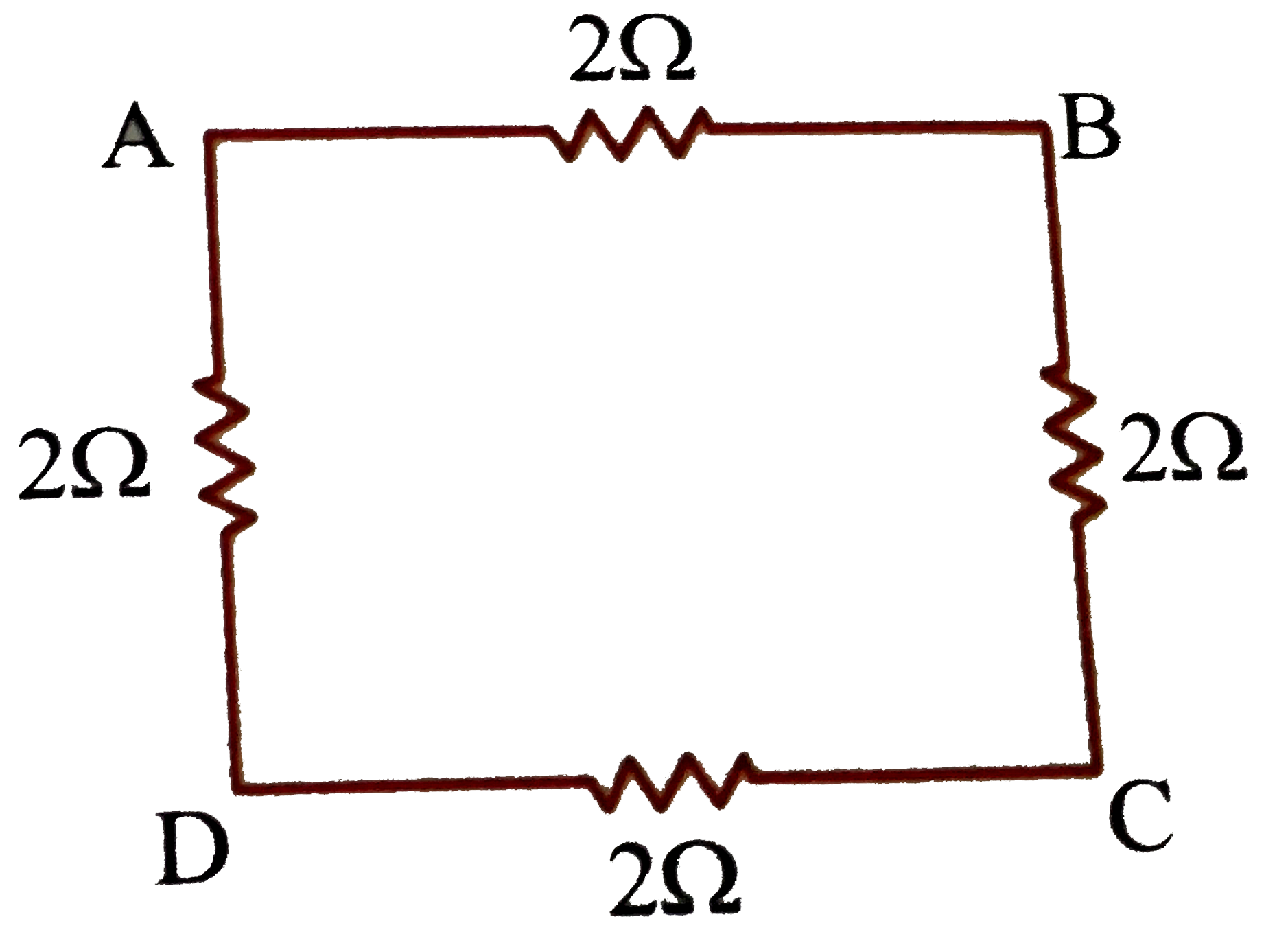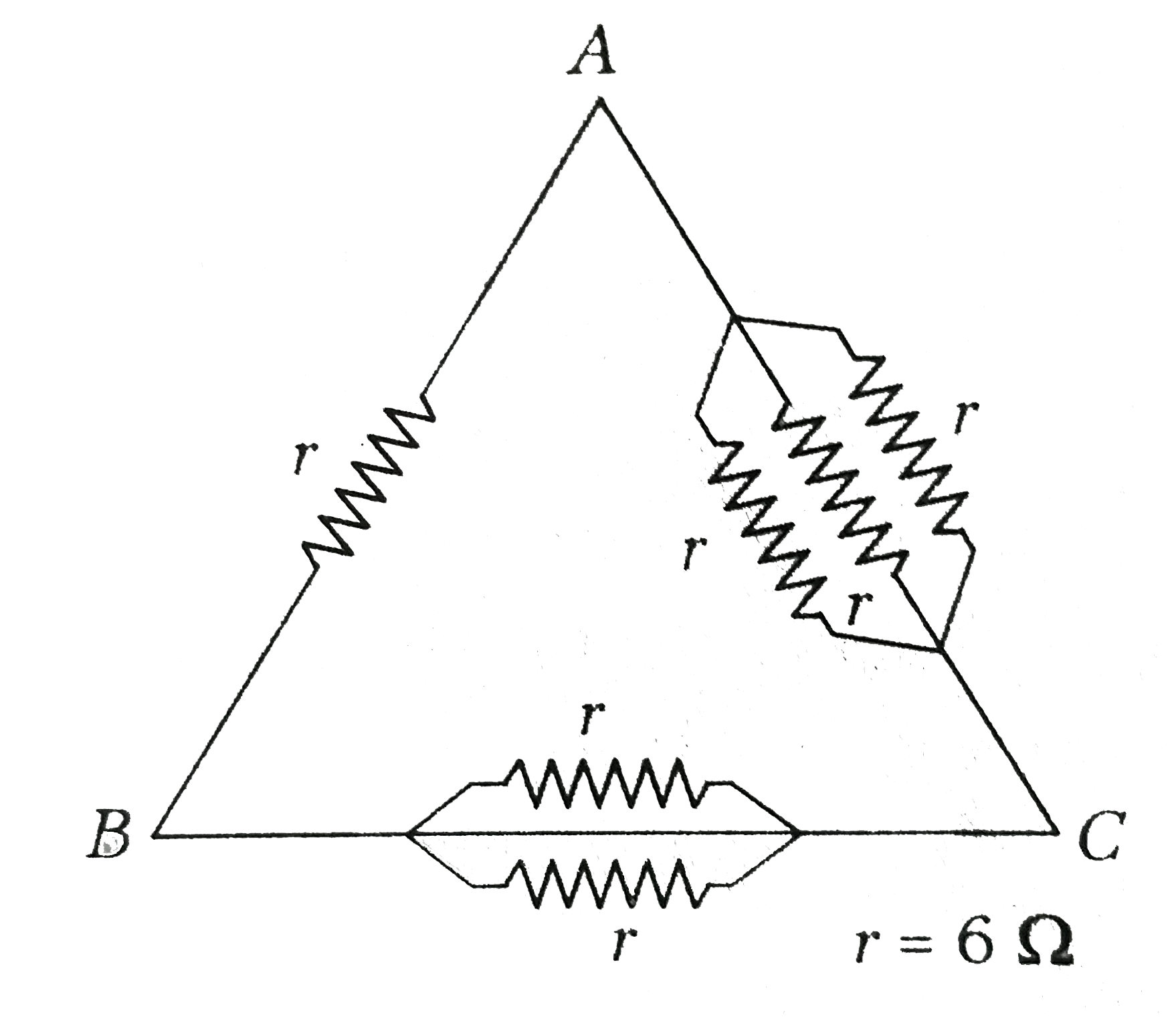If equivalent resistances of R1andR2 in series and parallel be r1andr2 respectively, then R1R2 equals
r1r2
r1r2r1+r2
r+√r21−4r1r2r1+√r21+4r1r2
r+√r21−4r1r2r1−√r21+4r1r2
The correct Answer is:D
r1=R1+R2 ...(i)
1r2=1R1+1R2=R1+R2R1R2
or r2=R1R2R1+R2
(R1+R2)2−(R1−R2)2=4R1R2
or r21−(R1−R2)2=4r2(R1+R2)=4r1r2
or(R1−R2)2=r16(2)−4r1r2
or R1−R2=±√r21−4r1r2 ...(ii)
From (i) and (ii),
2R1=r1±√r1r2−4t1r2
or R1=12[r1+√r21−4r1r2]
Also, R2=12[r1−√r21−4r1r2]
∴R1R2=r1+√r21−4r1r2r1−√r21−4r1r2
Topper's Solved these Questions
Similar Questions
Knowledge Check
- Question 1 - Select One
Two spherical nuclei have mass number 216 and 64 with their radii R1andR2 respectively. The ratio, R1R2 is equal to
A3:2B1:3C1:2D2:3 - Question 2 - Select One
Consider two resistors R1 and R2 in series. The current flowing through R1 and R2 is
AR1=/,R2=2/BR1=/2,R2=1/2CR1=/,R2=/DR1=1/2,R2=2/ - Question 3 - Select One
Two resistances R1andR2 provides series to parallel equivalents as n/1, then the correct relationship is
A(R1R2)3/2+(R2R1)3/2=n3/2B(R1R2)3+(R2R1)3=n3C(R1R2)2+(R2R1)2=n2D(R1R2)1/2+(R2R1)1/2=n1/2
Two resistors of resistances R1=100±3 ohm and R2=200±4 ohm are connected (a) in series, (b) in parallel. Find the equivalent resistance of the (a) series combination, (b) parallel combination. Use for (a) the relation R=R1+R2 and for (b) 1R'=1R1+1R2 and ΔR'R'2=ΔR1R21+ΔR2R22
View SolutionFour identical resistance are joined as shown in fig. the equivalent resistance between points A and B is R1 and that between A and C is R2. Then ratio of R1R2 is
 View Solution
View SolutionSix resistance each of value r=5Ω are connected between points A, B and C as shown in figure. If R1,R2 and R3 are the net resistance between A and B, between B and C and between A and C respectively, then R1:R2:R3 will be equal to
 View Solution
View SolutionSix resistances each of v ale r=6Ω are connected between points A,B and C as shown in the figure if R1,R2 and R3 are the net resistances between A and B, between B and C and between A and C respectively, the R1:R2:R3 will be equal to
 View Solution
View SolutionTwo resistance R1 and R2 when connected in series and parallel with 120V line, power consumed will be 25W and 100W respectively. . Then the ratio of power consumed by R1 to that consmed by R2 will be
View Solution

